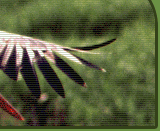| The Dviete Floodplain becomes richer This summer in Nature Park The Dviete Floodplain is lavish – wildlife cows and horses give birth to cubs, told Benita Đtrausa, Project manager of Bebrene parish administration.  | | Highlander cows grazing | | floodplain of Dviete river | The Dviete Floodplain becomes richer This summer in Nature Park The Dviete Floodplain is lavish – wildlife cows and horses give birth to cubs, told Benita Đtrausa, Project manager of Bebrene parish administration. In the beginning of the summer the first calf was born, it was given the name of the river – Dviete. Within the next months calves were born also to other long-haired Highlander breed cows. In its turn, Konik Polski stallion Kriđs born last year got a company of this summer’s stallion Kaupo. Wildlife horses and Highlander cows in the Dviete Floodplain now have got even more freedom – the pasture-ground is enlarged from 50 ha to 100 ha, and at the moment the herd can be seen also on the territory of Pilskalne parish. | 
| | Stallions gnaw | | the peel of osier bush | Big herbivorous animals do very important job on the floodplain – they pasture the meadows of the floodplain of the river Dviete and do not allow the bushes to overgrow it. Within a year, since they reside in the Putnusala pasture-ground, the positive effect of grazing is obvious. In winter the cattle were foddered, horses especially enjoyed eating osier bush peel and branches. That’s why the surrounding landscape has become more bald and visible. It is good for the birds that nest in bushes – landrail and snipe, which are in the world’s endangered-species list. A week ago, in August, joint work took place also for tidying up the territory of the emerging centre of environment information and education in Putnusala of the Dviete Floodplain. In future it will be possible to attract more visitors and inform them about the activities on the territory of Latvia’s biggest floodplain meadows. The restoration of Latvian floodplain meadows occurs within the framework of the LIFE-Nature project implemented by The Latvian Fund for Nature, but the cattle for the floodplain is provided by the Netherlands Fund for Nature ARK. Latvian Ornithological Society and Parishes Association of Dviete Valley helped to organize the joint work. In the nearest future it is planned to continue restoration of the Dviete floodplain meadows, revert the part of the straightened river Dviete in its ancient winded bed, as well as promote the development of ecotourism and environmental education. More information about Dviete floodplains you can find here

| 






